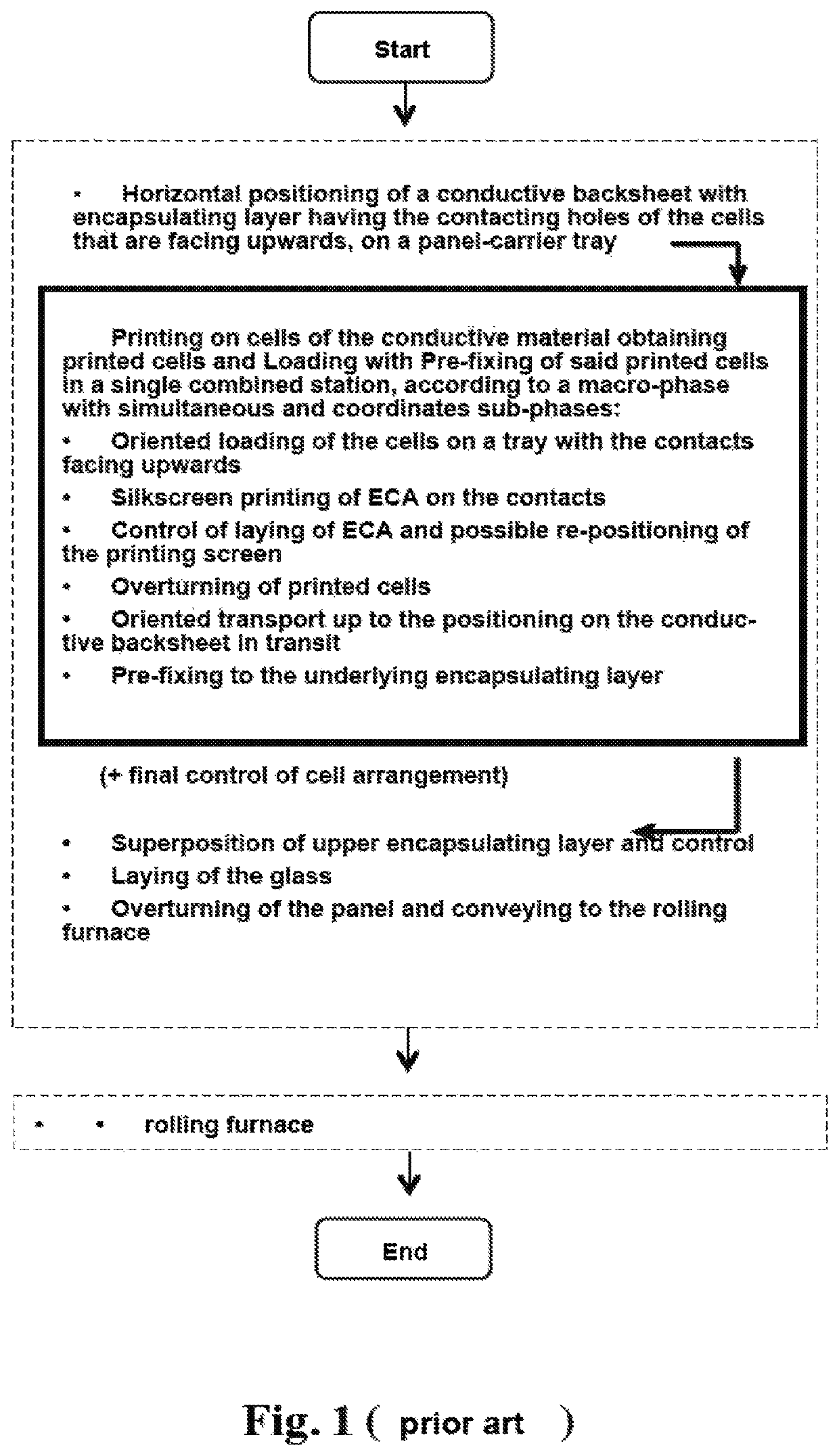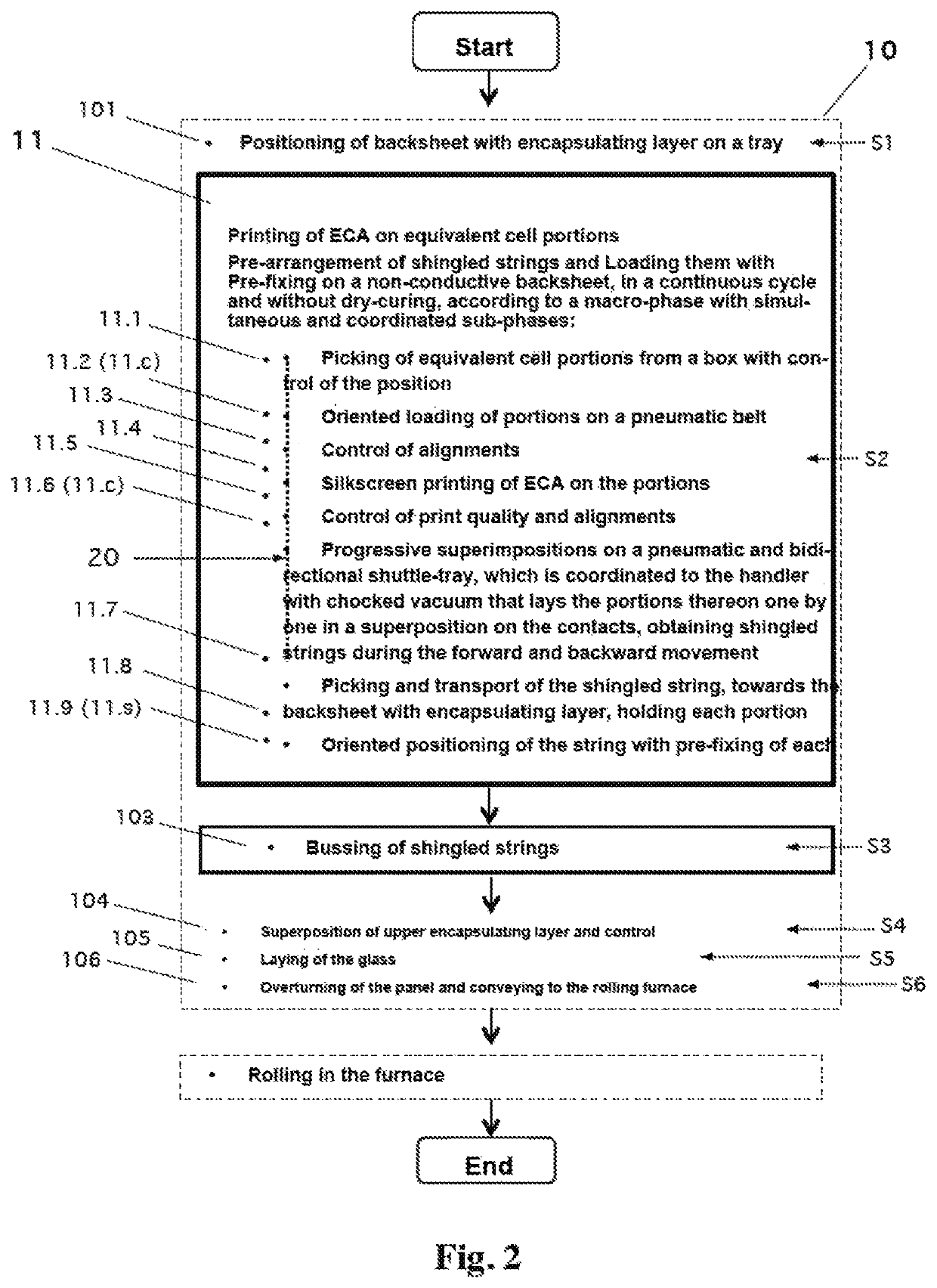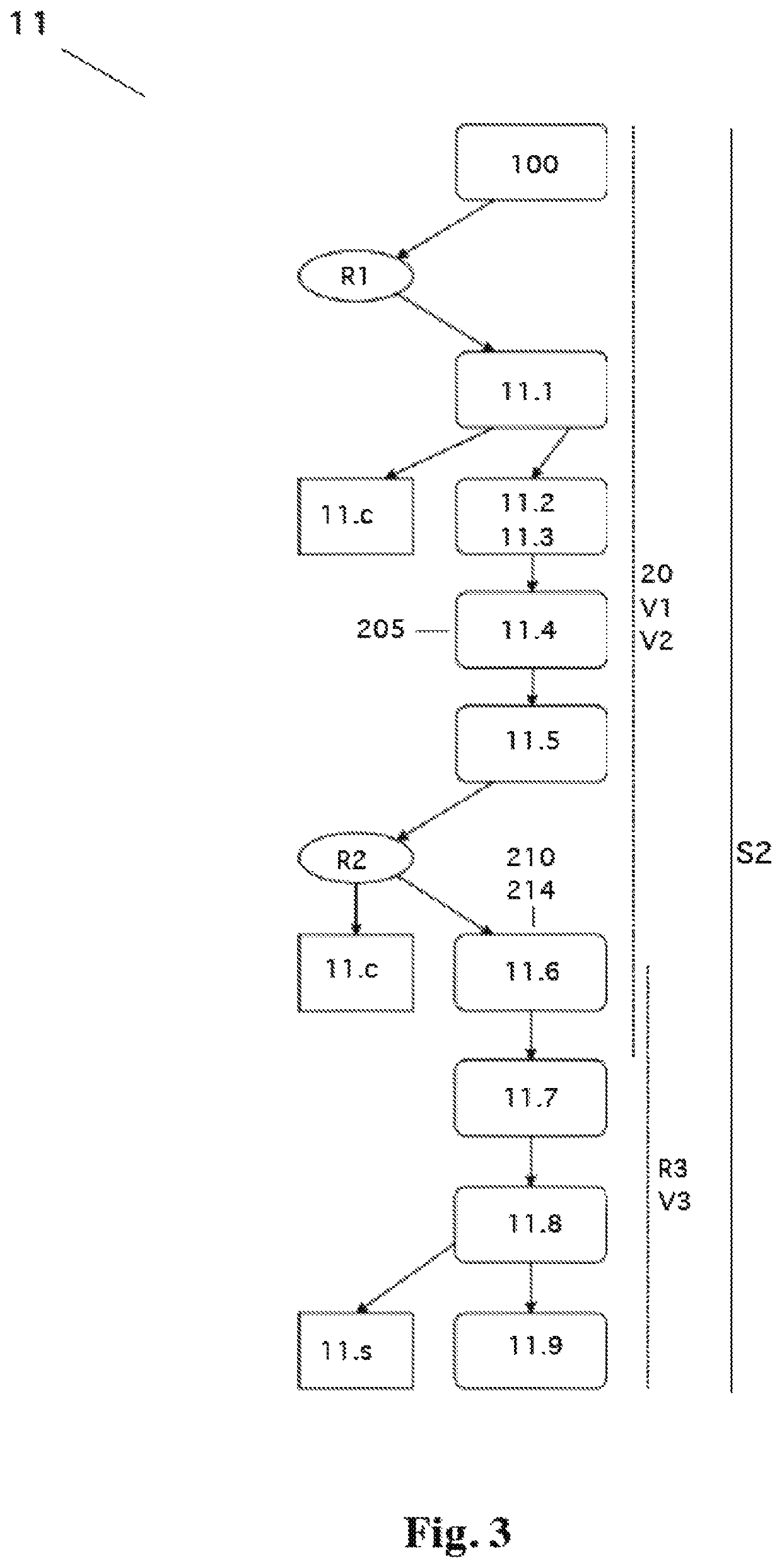Assembly method and combined bivalent station for photovoltaic panels
a photovoltaic panel and workstation technology, applied in photovoltaic supports, transportation and packaging, sustainable buildings, etc., to achieve the effect of facilitating the head-tail connection, reducing the length and/or the complexity of conductive elements, and fast and economical manner
- Summary
- Abstract
- Description
- Claims
- Application Information
AI Technical Summary
Benefits of technology
Problems solved by technology
Method used
Image
Examples
Embodiment Construction
[0082]With reference also to the figures (FIGS. 2-9b), a method (10) is described, which comprises a macro-phase (11) for advantageously assembling photovoltaic panels (400) with crystalline silicon solar cells of the traditional type with top-bottom contacting, or cell portions that are identical one another (403a-403d), wherein said cells or portions are partially superimposed (404) like roof tiles for direct contacting, namely in the form called shingled. In particular, there is provided to print ECA on said cells or portions (403) and immediately pre-arrange them in a progressively superimposed way by forming shingled strings (402) in turn alternated in the direction of the head, with a particular operative logic (11.111.6) and with a particular automatic shingling apparatus (20) (FIGS. 5a-5b, 9a-9b), wherein said shingled strings (402) are pre-arrange and ready to be immediately loaded and pre-fixed (R3) on a backsheet provided with an encapsulating layer (401) (11.711.9), oper...
PUM
 Login to View More
Login to View More Abstract
Description
Claims
Application Information
 Login to View More
Login to View More - R&D
- Intellectual Property
- Life Sciences
- Materials
- Tech Scout
- Unparalleled Data Quality
- Higher Quality Content
- 60% Fewer Hallucinations
Browse by: Latest US Patents, China's latest patents, Technical Efficacy Thesaurus, Application Domain, Technology Topic, Popular Technical Reports.
© 2025 PatSnap. All rights reserved.Legal|Privacy policy|Modern Slavery Act Transparency Statement|Sitemap|About US| Contact US: help@patsnap.com



